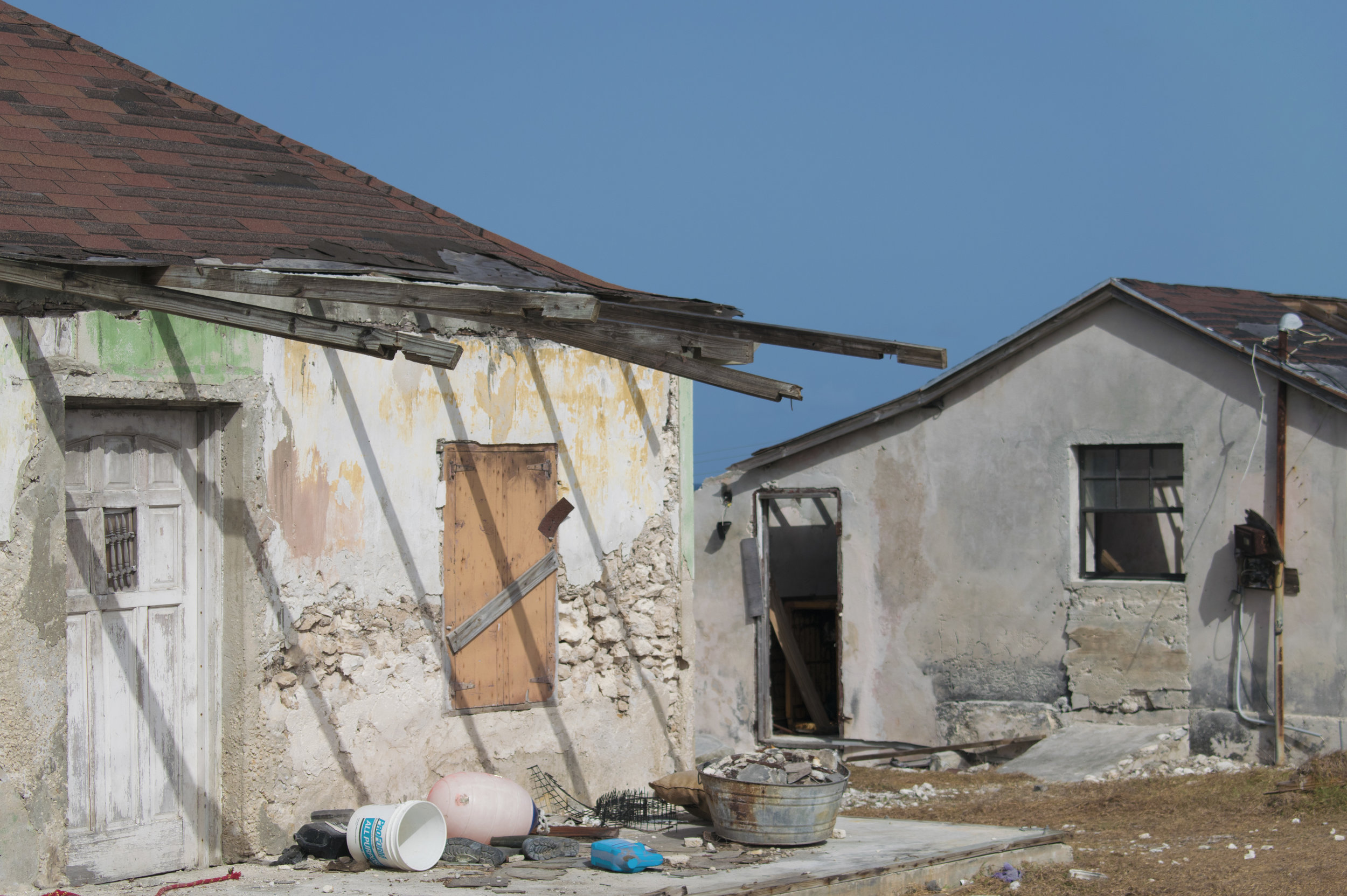
Ethan Knowles
Guest Intern for the Double Dutch 2018 Project
When I first came back home I was afraid. Though the hurricane was long over, and the news said that all the rotting carcasses had been cleared away, I was afraid nonetheless. I was afraid because I barely recognized anything. Riding around in Aunty Mary’s two-seater truck, I couldn’t spot the crowds of red mangrove that would ordinarily welcome me home after so many hours spent on the mailboat. Instead, I saw angry, misshapen skeletons tearing at the shore. I didn’t see Uncle Freddy or Ma Pat working the salt flats either. In fact, I didn’t see anyone down there – just flooded pans and brooding boundary lines. I turned away to gaze at the sea. I scanned the horizon carefully, but there wasn’t a boat in sight; and when I spun around to survey the land, I couldn’t make out a single child’s mother gathering tops in the bush.
I think the emptiness scared me too.
When we reached Duncan Town, Aunty Mary’s mouth fell open in horror as a different island fumbled into view. Debris was everywhere. From wooden planks and shingles to buckets and bruised plastic. Shattered glass pooled in strange places, while broken windows and doors ajar made you wish it were all a robbery. Made you wish there were someone to blame.

Abandoned Homes in Duncan Town, Ragged Island, July 2018. Photo by Ethan Knowles.
The clinic, police station, and post office had all been destroyed, too. Roofs had caved in, if they had not been torn off entirely, and everyone was stuck wondering whether to pray for rainwater to drink or sun to dry out the salt. It seemed more and more as I wandered around the ruins of my childhood town that the people of Ragged Island were stuck between two extremes. Half of them wanted to pack it all up and leave, to get as far away from any ugly gift Irma left on their lot, but the other half couldn’t ever imagine living anywhere else – especially not in Nassau.
And the funny thing was, the halves were always changing. You got so sick of pouring cement one day, but then the very next you sat by the harbour and swore you’d dredge this channel with your own two hands before you let the government tell you your home is unlivable. For a while, I wasn’t sure which of these halves I belonged to. Aunty Mary was, though. She said there was no way a girl like me could live down here. I argued with her, initially. But then I saw something that made me not so sure.

Interior of Ragged Island All Age School, July 2018. Photo by Ethan Knowles.
Aside from how alien and empty the town was, I think what scared me most was the school. Of course, I had seen the pictures – we had all seen the pictures. But it was far worse in person. A picture couldn’t capture the despair you felt standing there, the rage, the loss. On that day, the tattered establishment of my early education stood before me like a bad museum. All the relics were there, just in worse condition. The desks, the books, the goatskin drums; all worn and dust-ridden. Suspended above were the rusty fans that kept us cool, punctuated by lonely spools of exposed wire. A bent door stabbed the still air while broken pieces of ceiling gathered soberly in the corner. All of this I observed from an unshuttered window. And the worst part was not the seeing, as any child could see such a disaster and register its dreadfulness, but the understanding. When I saw the school, I understood that families would not stop being torn apart until it was fixed. Days would go by and some would stay to rebuild, but the rest – mostly women and children – would go to Exuma or Long Island or New Providence and see to it that the next generation would know better. I looked at Aunty Mary with tears in my eyes. She said it was time to go.
Aunty Mary drove us to the church and we stepped once more into this awful new world of ours. I was still afraid then but something about that church settled me right down. Almost at once, I felt safe. From outside I heard the hymns the whole island used to sing together pound the walls. By the time Aunty Mary and I slipped into the congregation, moved through the pews, and finally sat down near the back, all my fear had melted away. And for the first time since getting off the mailboat, I realized something hadn’t changed on Ragged Island. With not one functioning public facility, with barely enough water to get by on, with even fewer jobs than fixed roofs, the people of Ragged Island had not lost their spirit.